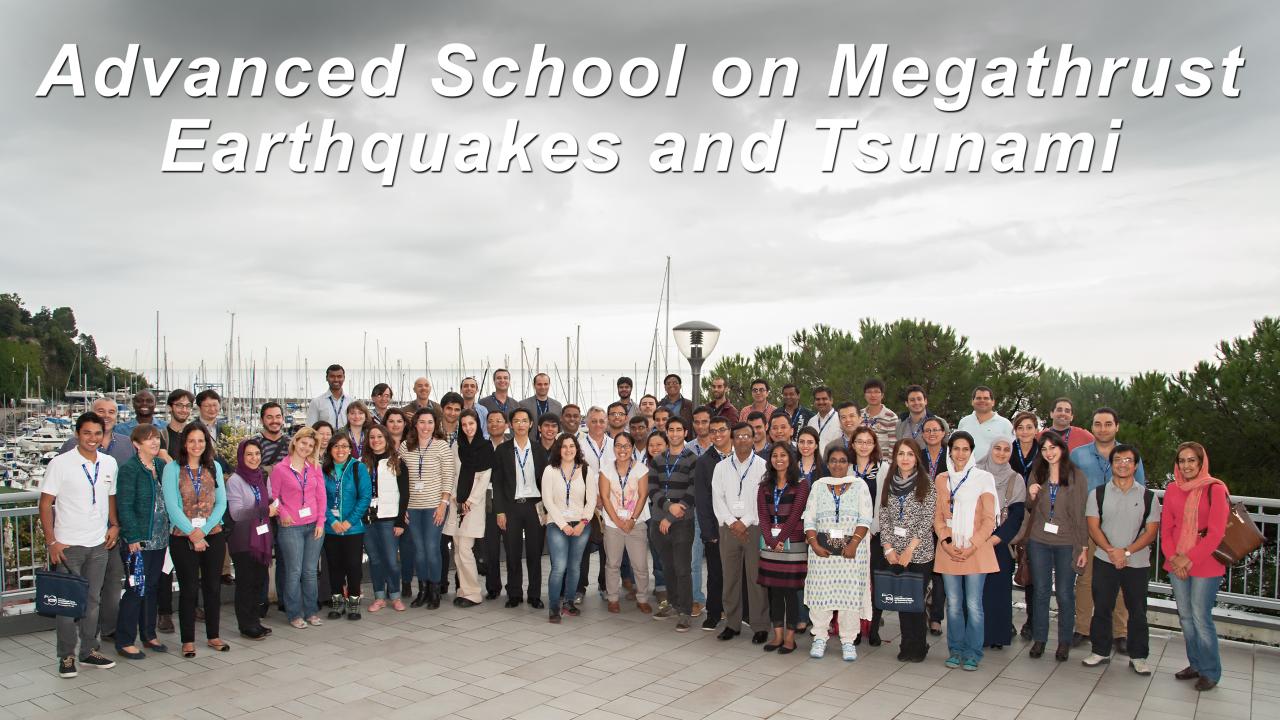
The devastating Sumatran tsunami of 2004 began with a single movement of the Earth, a 1300 km rupture of a fault beneath the ocean floor that violently shook the land and moved the water above it with fatal consequences.
Megathrust earthquakes, like the Sumatran rupture and the 2011 Japanese rupture, measure in at magnitude 8 or higher and originate in subduction zones. Since most subduction zones are beneath the ocean, these massive earthquakes often result in devastating tsunamis. Recently, scientists have begun to harness the power of the large amounts of data recorded during such seismic events (and freely available online) to better understand them and the tsunamis they generate. At ICTP, a two-week school is equipping young researchers from developing countries with the techniques to analyse the newly available information.
Already, ICTP postgraduate diploma students have been analysing some of the data as part of their diploma work, demonstrating that students from around the world are up to the task of gleaning valuable information from the available data. "We do not just look at theoretical aspects but our students work on real monsters, these giant earthquakes - and they get results!" said Abdelkrim Aoudia of ICTP's Earth Systems Physics section and the school's organiser.
"This is a really important school in the sense that it's quite timely," Aoudia said. "We're exposing folks from developing countries to all the recent real-time knowledge that you gain from a mega earthquake. The results of the Chile earthquake that happened just a few weeks ago will be presented here."
The school began with lessons on the theory and physics of seismic waves and tsunamis, and by the end of the first week students were ready to work with the data. "The idea is to share with many people from developing countries that are living in places that could be subject to earthquakes and tsunamis of this size all the information that we gained from the recent big quakes," Aoudia said.
The data come from countries like Chile and Japan that are outfitted with extensive and sensitive monitors that collect information on the Earth's movements. GPS and seismometer data from these regions have already demonstrated that the Earth begins to inch its way towards a mega earthquake days or even weeks before the main event, a process known as "slow slip."
While researchers used to try to apply data on smaller earthquakes to understanding the big ones, this new data raises the possibility of the opposite process: using data that are more easily visible because the earthquakes are bigger to understand earthquakes more generally, regardless of size. In that sense, Aoudia sees this week's school as a complement to a school on continental earthquakes that ICTP offered last year. "We will push and try to get into how an earthquake starts, when it starts, why it starts, and how big it will be," Aoudia said.
A more general understanding of earthquakes could in turn save a lot of lives. Although subduction zone earthquakes are powerful, "the big killers are the tsunamis they generate and not the mega quakes themselves," Aoudia said, with the possible exception of earthquakes rising from a risky subduction zone that sits beneath the Himalayas. But if mega earthquakes could provide insight into their smaller and more deadly brethren that occur under megacities, they might eventually lead to better preparedness. "You won't stop an earthquake," Aoudia said. "So as we cannot predict them, the understanding of how they start and how big they could be would provide us with a great deal of information."
















